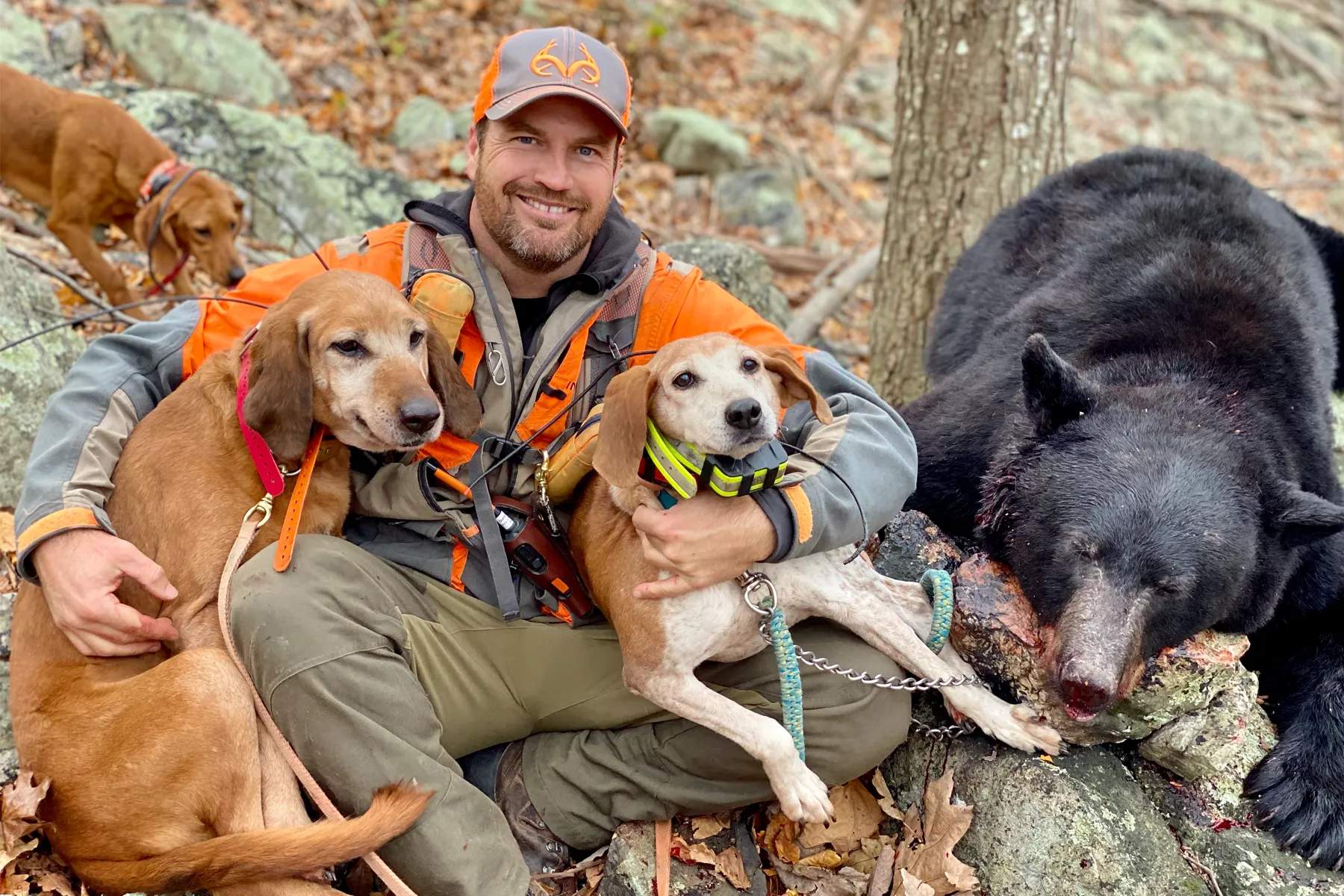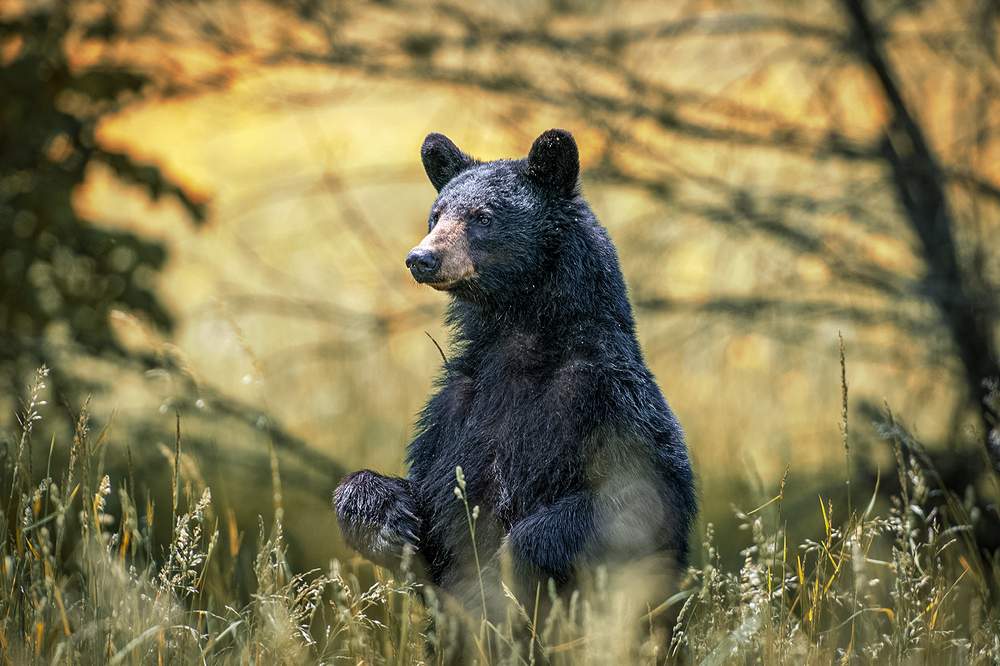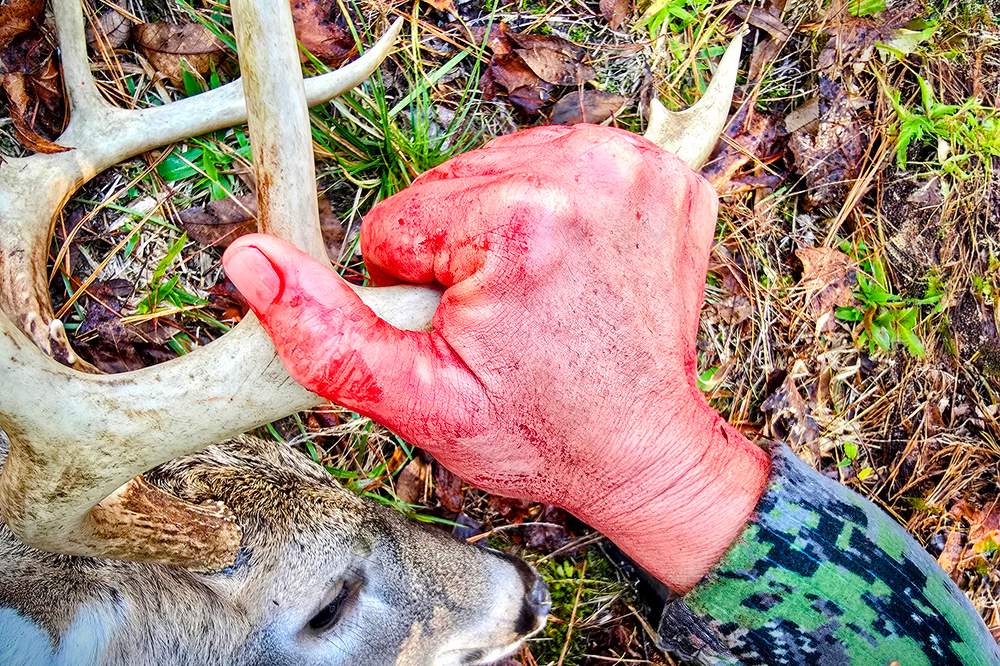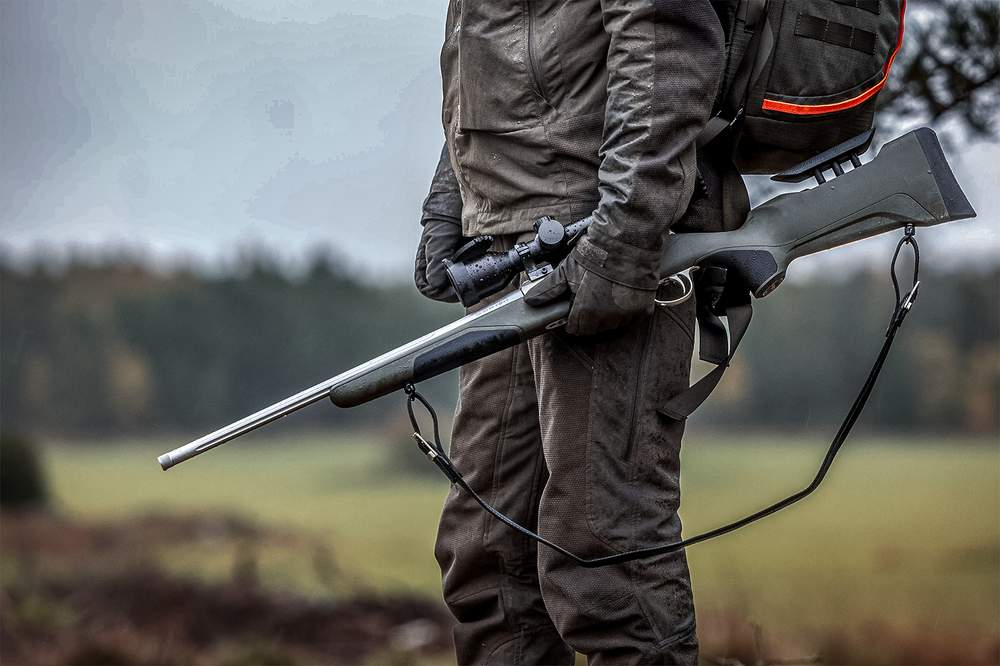A fresh track in the snow sets the course. Seasoned houndsman Josh Hedrick cuts his pack loose, and they take off. The hunt is on, and the sounds of the chase echo throughout the mountain. The age-old tradition of man and dog working together is alive and well in Appalachia.
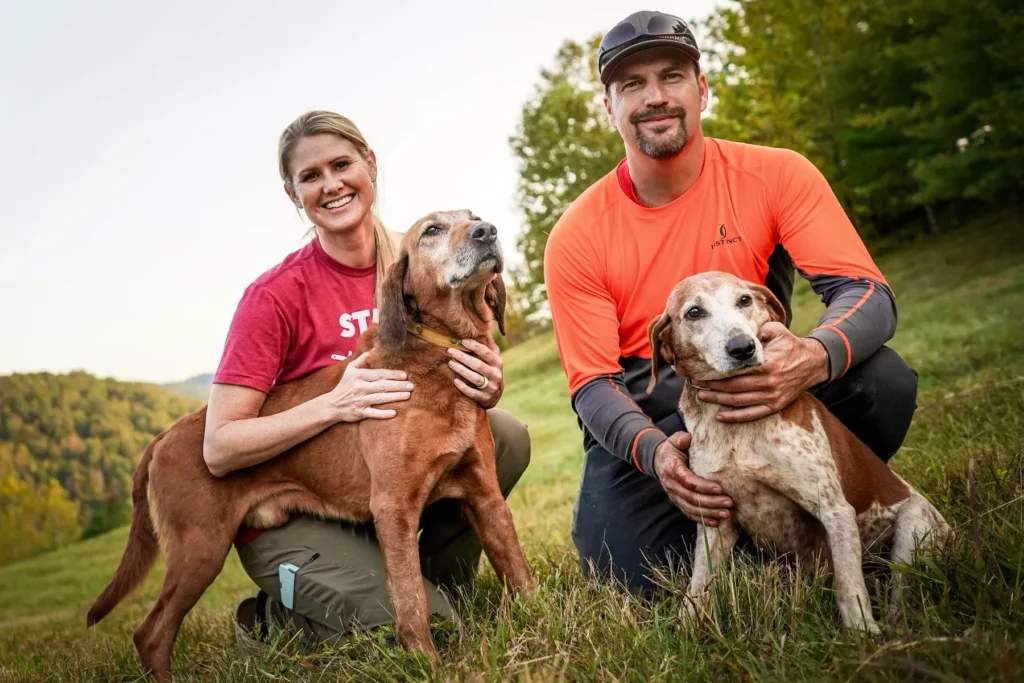
A few hours later, he realizes that the dogs have the bear treed. He glances over at his wife, Rachelle, with a wry smile. She returns the sentiment. “Bear in the air,” he says. They grab leads and packs and hustle toward the next phase of their adventure.
Hedrick is an experienced houndsman from West Virginia. He has been ethically and responsibly bear hunting with hounds for about 30 years, but was exposed to the lifestyle even before that. With that level of expertise, he’s the ideal individual for useful advice on bear hunting with hounds. Here were his responses to some of our most pressing questions.
HB: How significant is bear hunting with dogs in West Virginia's hunting heritage?

Hedrick: If they start voting out hound hunting nationwide, West Virginia would be the last to go. It goes way back. Folks here, if they have two weeks of vacation, there’s a good chance they take off in bear season.
How many bears can a West Virginia resident hunter shoot during the hound season?
You can take two bears. One of them must be in the southern portion, and one must be in the northern portion, where I live.
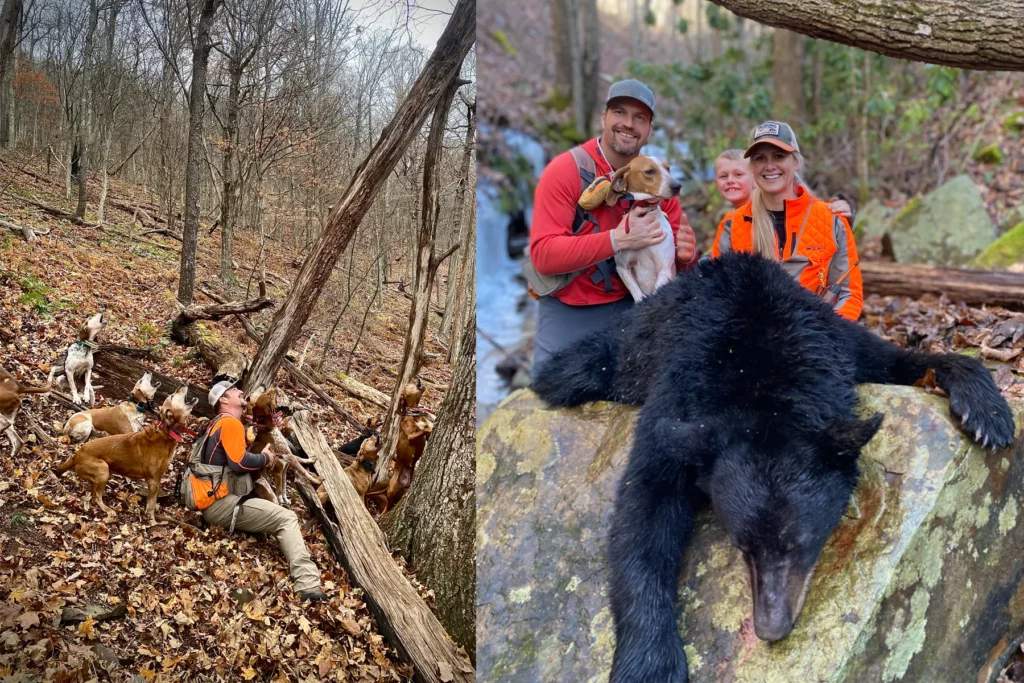
What’s a big bear in West Virginia?
Here, a big bear is a 250-pounder or bigger. We get some 400-plus pounders, but it’s rare. We don’t have a lot of crops. To get those bears, you need crops. They must be eating well to reach big weight classes.
When bear hunting, how many dogs are you hunting with?
It depends. This is kind of a camaraderie thing. You have different groups. Other parts of the country have rabbit, deer or hog hunting groups. It’s the same with bear hunting. You’ve got your gang. Everyone might have three or four, to six or seven dogs. We have the whole month of December to run, and people will take a few each day.
How well do strange dogs work with each other? When you suddenly put dogs together for the hunt, how does that generally play out?
There are dogs that honor other dogs. And there are dogs that just won’t mix. But for the most part, my dogs don’t have a problem running with strange hounds. Even if you bring yours from Timbuktu, and we put them all on a track, my dogs are going to run that bear track regardless.
What happens when dogs don’t mix well?
You will have dogs that don’t mix well. Typically, that’s not a huge problem. But the real problem comes when you get the bear treed, especially if you have dogs that like to stand on the tree and bark. Sometimes, they can get jealous of another dog trying to stand on the same tree or tree beside them. That’s when you must watch for what we call face barking, where he’s looking at the dog beside him and barking in his face rather than barking up at the bear. It’s a get-off-my-tree kind of thing. Those are the times you must be careful, but they can be treed an hour or two before you get there, so you must get there as fast as you can if you have a bunch of strange dogs. If you can’t correct it, tie the dog back with a lead strap by itself.
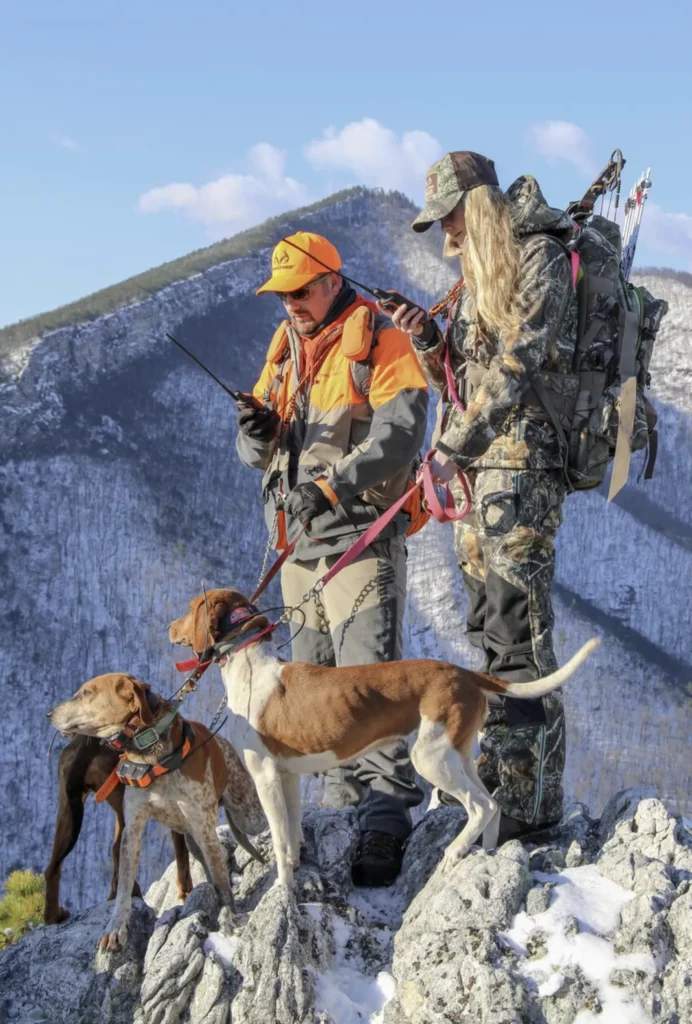
Is it better to have a smaller unit of dogs that work well together or a bigger number?
When you don’t want a bunch of dogs is when you get on what we call a walking bear. This is a bear that doesn’t want to tree. He just wants to walk and fight on the ground. Most of the time, these bears are big enough to keep the dogs at bay. They can hold their own. The bear might slap a couple of them or get their attention, and then the dogs will just walk along behind them. You have 20 dogs following a bear like a duck and her ducklings. That doesn’t make it easy to get a shot. But that bear will typically try to find a hole or log where he can fight the dogs head-on. In this case, it’s better to have fewer dogs because it’s easier to get a clean shot.
What causes a split chase while hunting with hounds?
Sometimes, you might have multiple chases going on in the same area. If the bears cross paths, you might end up with more dogs on one bear than the other because they crossed paths. I’ve seen a pack of hounds go into a laurel thicket and split three ways.
Once it’s time to shoot the bear, what happens?
It’s all about a clean, ethical shot. We like to get the dogs tied back before shooting the bear out. If you knock that bear out, and he’s crippled, you don’t want a bunch of dogs piling on it. Or you might not be able to get that second, finishing shot off. But bears can bail out before you get the dogs tied back. Then, you have a mess on your hands. Have a buddy with a pistol safely back you up in case the first shot didn’t do the job.
How tough are bear hounds? Is it common to lose dogs to bears?
These dogs are gritty, but they aren’t stupid. In my lifetime, in our packs, we’ve probably lost 10. But I’ve been hunting since diaper rash. Not to sound insensitive, but we’ve treed hundreds of bears, and realistically, 10 isn’t that much.
Given the dangers of hound hunting, why should it continue?
The dogs love what they do. It’s what they were made for. Our season just ended, and we hunt almost every day of the month-long season. Right now, if I go out here and get my pickup truck or side-by-side, they’re off the chain because they think it’s time to hunt again. They don’t know the season is out. It’s just what they do. I can’t even sneak out and get a stick of wood for the stove without them waking up the neighbors. They live and breathe it. They want to go, go, go.
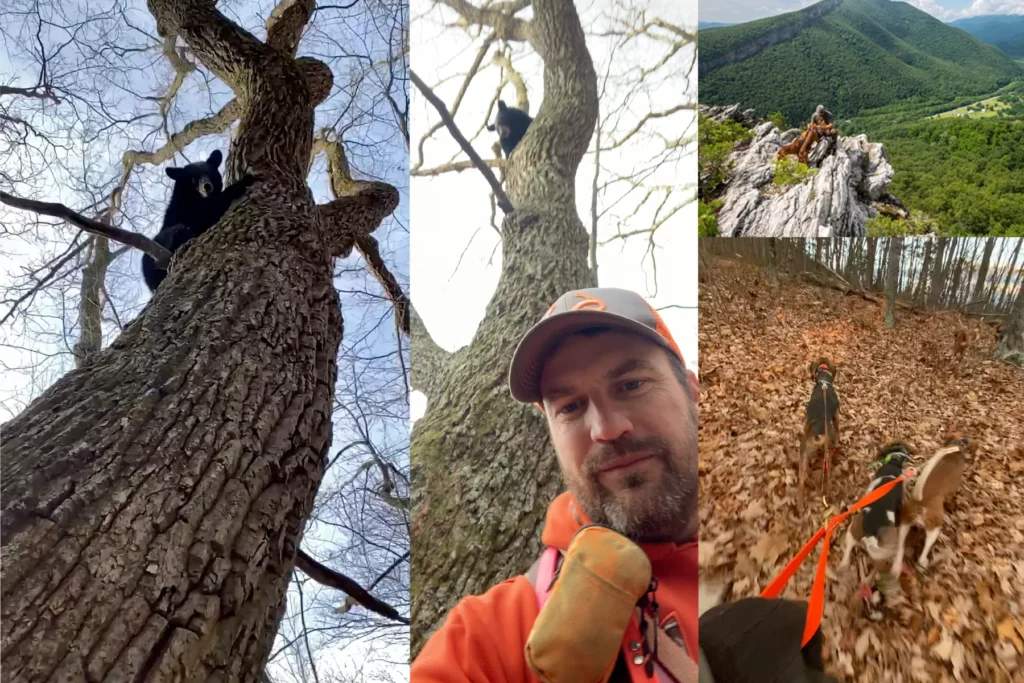
Who is hound hunting for?
Not everyone has a pack of hounds. And when hounds come through, they aren’t quiet. They stir up the woods. We have 1.9 million acres of national forest. With vast areas of public land, it’s a lot easier to run hounds, especially if running bears or something similar. You might turn hounds loose and cover 2,000 to 3,000 acres or more in a chase. If you try to do that in a private ground setting with five- to 10-acre tracts, look at how many landowners you are crossing to have a bear chase. You need big areas to do it.
For an aspiring bear hunter (with hounds), what is your best advice to get them started?
Make sure you shadow someone who is experienced. I wouldn’t recommend anyone buy a dog, put a collar on it and start hunting. If you have a dog, collar, equipment and have no clue where or how to go, consider finding a mentor who is a seasoned houndsman.
For the average houndsman, what is your best advice that can take them to the next level?
A lot of hunters put their dog on the rig, which is on their truck. They’ll ride these back roads and try to pick up a scent. That’s called rigging. When you’re rigging and you don’t strike a track, you haven’t exhausted all your options. Find a walking trail or somewhere you can find access, and get your dogs into the woods. Let them hunt that way. Don’t just go rigging on roads.
Where are the best places to get dogs onto a good track?
We don’t have a spring season. Most of our seasons are fall seasons. Don’t discount hunting around berry patches like blackberries, autumn olives, raspberries, etc. Focus on the white oaks, too. Early white oaks are magnets for bears. Plus, black cherry and beech if you have a good crop. Most wild cherry falls early. They move into the red oak and chestnut oak after the white oaks are gone.
What are the best hound breeds for bear hunting?
Black and tans, red bones, English blue ticks, English red ticks and walkers — those five will cover anything. Some guys breed some pit bull into their hounds, but man, do they have some vet bills. They see a bear and pile on it. These dogs are too gritty. A 200- to 300-pound bear is going to work it over. A good bear hound has good stay. He’ll stay put, but not get close enough to get hurt. It might grab or pinch a little, but you don’t want it to go all in and attack or kill the bear itself, or it will have a very short life. So, you want some grit, but not too much.
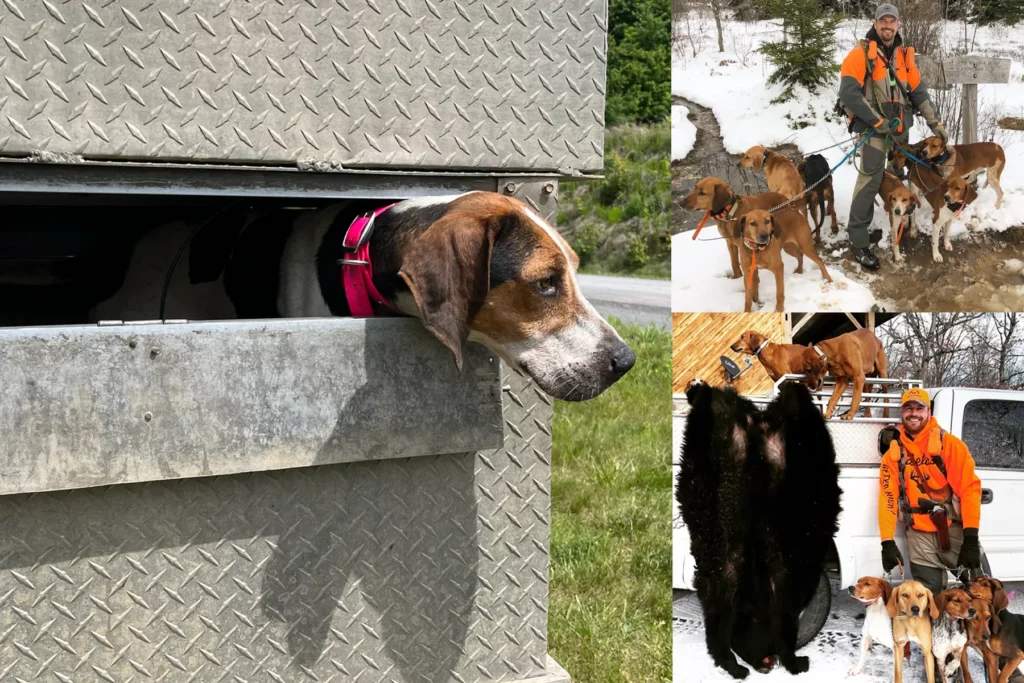
Where are most hounds trained and coming out of?
West Virginia has a big pool of hounds. But guys who want new stock or something different will get something from out West, such as Idaho, Utah, New Mexico, and maybe Montana. You’re getting a different genetic, and a lot of western dogs have a colder nose. If your dog has a cold nose, it means they can smell an older track. Out there, they don’t have much moisture or humidity. In the East, we have more rainfall and humidity. It’s easier for dogs to trail. But out West, they must breed dogs for colder noses, because if they step on a dry rock and it’s 85 degrees with the sun burning down, it’s going to burn off that scent fast.
In terms of political heat, where is the bear and hound hunting industry today?
Anything with hounds, whether it be bear, lynx, bobcat, mountain lion, whatever it is, it’s all low-hanging fruit. They’re going to pick at us first.
What should hound hunters do to ensure the longevity of this lifestyle?
It’s bigger than hound hunting. Sure, the hound hunting would go first. They’ll say it’s unethical to turn dogs loose on a bear. They’ll say, ‘Why do you need those dogs to kill a bear?’ Well, you don’t necessarily need the dogs, but that’s the lifestyle. Why do you turn 10 beagles loose on a rabbit? It’s the same scenario on a different scale. Everyone who hunts with dogs must band together. Whether it’s a guy who uses labs to duck hunt, a guy who uses shorthairs to hunt pheasants or anyone else who uses a dog for hunting (retrieving or trailing), we must stick together. If not, there isn’t going to be anything left. The duck dogs might be the last to go, but if we don’t all stick together, they won’t stop. They’ll pick on bear and lion hunters first, and then trickle down from there.
Why else is it necessary to keep all hound hunting in place?
In Colorado, there was recently a mountain lion that came into a town and killed 14 household dogs. And in California, you have mountain lions killing kids on playgrounds. This is because they don’t manage predators. There are only certain ways to manage predators, especially like that, and hound hunting is the most effective way to manage apex predators. I’m not saying to turn hounds loose on everything, but hound hunting has been an effective management practice for a long time.
Are sportsmen seeing political wins when it comes to the fight to protect hound hunting?
Montana recently passed legislation to open their spring bear season to hounds. That was huge. New Jersey had so many nuisance calls last summer that it reopened its bear season. All these nuisance problems are making people realize that predator management is necessary and critical for a balance between humans and wildlife.
See below to watch Josh in action!
